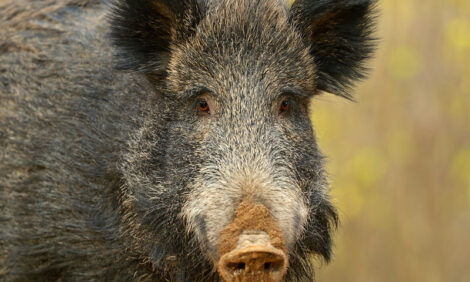



More Antibiotics but Fewer Critical Antibiotics
DENMARK - New figures from the Technical University of Denmark (DTU) show a 12 per cent rise in the use of antibiotics for pigs in Denmark during the first half of 2009.At the same time, a new report from the Danish Integrated Antimicrobial Resistance Monitoring and Research Programme (DANMAP) shows a fall in the use of antibiotics that are critical to the development of resistance to antibiotics.
The growth in the use of antibiotics reflects an increase in the number of animals in pig production during the first half of 2009. The number of sows rose by 6-7 per cent, leading to a rise in the number of piglets. Part of the rise in antibiotics consumption can be explained by the greater incidence of diseases among these younger pigs, and thus there were more animals to be treated in the first half of 2009.
General fall in use of critical antibiotics
In both 2008 and the first half of 2009 there was a general cut in the use of antibiotics that are important in the human treatment. The antibiotics used were primarily those recommended by the Danish Veterinary and Food Administration for reducing the risk of development of resistance.
“Denmark is a pioneer in limiting the use of antibiotics, especially the type of antibiotics that can promote the development of resistance and thus threaten the treatment of both people and animals,” says Minister of Food, Agriculture and Fisheries Eva Kjer Hansen. “Therefore it is positive to see a continued fall in the use of cephalosporins, which are some of these critical antibiotics.”
Eva Kjer Hansen adds: “Animals must be treated when they are ill, of course, but we must continue to be at the forefront in minimising the use of antibiotics. The Danish Veterinary and Food Administration is therefore looking at ways of curtailing the rise in consumption of usual antibiotics.”
The Danish Veterinary and Food Administration’s veterinary inspection team will target its inspections and advisory functions in the coming months on veterinarians who prescribe medicine to the herds with the largest use of antibiotics. If the veterinarians do not change their prescription habits, the veterinary inspection team can start to monitor them closely and if necessary can order laboratory examinations before the veterinarians prescribe medicine. This method was used successfully when there was an unexpected 25 per cent rise in the use of antibiotics for pigs between 2002 and 2004, stopping the rise in consumption.
In addition, the Danish Veterinary and Food Administration will start a dialogue with veterinarians and pig producers about the causes of the rise in use of antibiotics.








